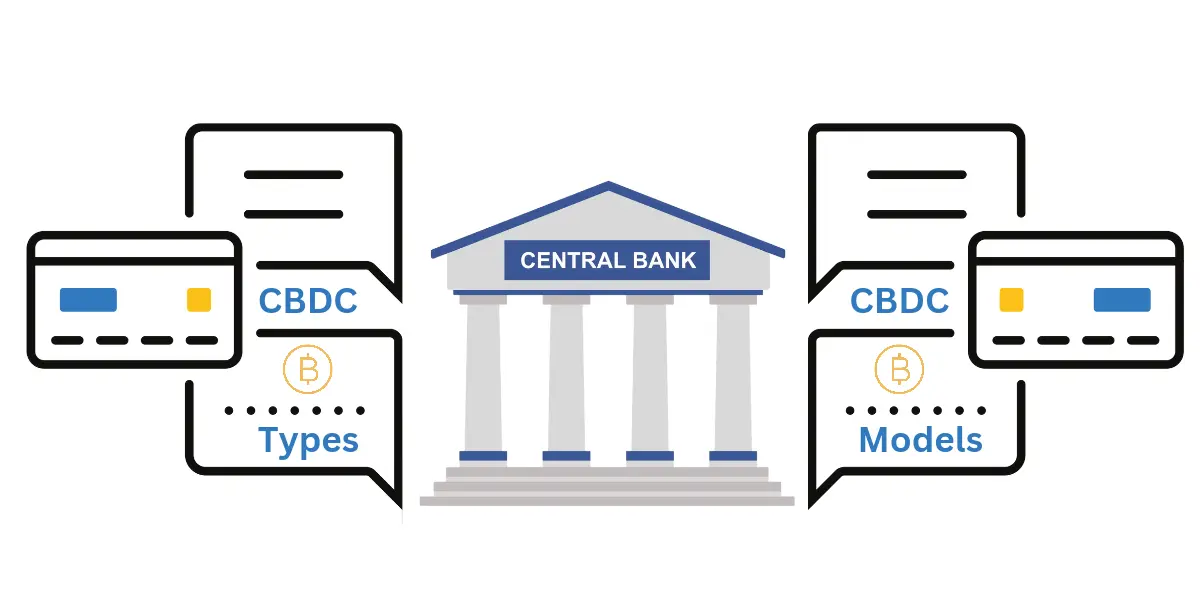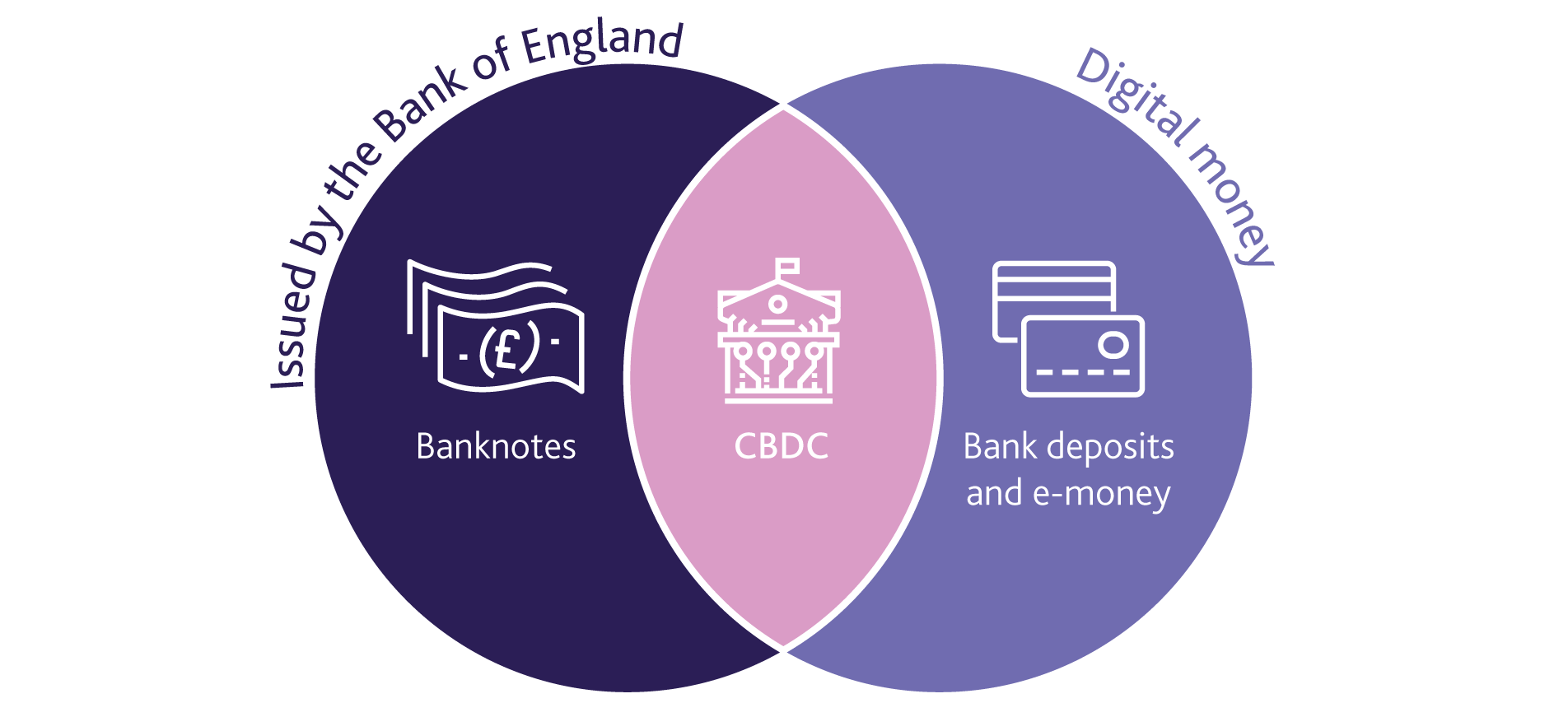How CBDC will affect banks is a hot topic and one that needs our full attention. Gone are the days when traditional banking was the only game in town. Now, with Central Bank Digital Currencies (CBDCs) stepping onto the playing field, things are about to get shaken up. Think of banks like old trees; CBDCs are the new gust of wind creating ripples in their branches. We’re on the brink of a revolution in how we think about, use, and manage money. Let me guide you through this new terrain where digital meets currency and prepare you for the seismic shifts in banking operations, profitability, and services that are coming our way. Buckle up – banking is about to get a high-tech makeover, and you’ll want to be ready for it!
Understanding CBDC’s Impact on Traditional Banks
The Shift in Bank Profitability Paradigms
Banks make money in several ways. They earn by lending out money and get interest. They charge for services, like account fees. Before, this was enough. But with a CBDC, or Central Bank Digital Currency, they face new challenges.
Let’s break this down. Imagine banks like big old trees. These trees have deep roots in lending and service fees. But here comes a big storm named CBDC. It shakes things up. Banks need to find new ways to stand strong. Or they can lose profits from what they used to do.
The CBDC brings changes to how we all use money. It is like digital cash from the central bank. People might use it to pay for things directly. If they do, they might not need regular bank accounts as much. That’s a big deal for banks. It means they have to think of new things to offer us. If not, they could earn less cash.
Adapting to Central Bank Digital Currency Integration
Now, let’s talk about getting used to these new CBDCs. Banks won’t sit by and just let things happen. They are good at adapting. Just think about how they jumped onto the internet and mobile banking.
First things first, banks have to understand CBDCs. They’re like a new game and banks need to learn the rules. These digital bucks work on blockchain tech. It’s like a chain of digital blocks that carries all transactions. Very safe and hard to mess with.
The big thing banks have to do is get their systems ready for CBDCs. This means their computers need to talk the same tech language. For us, this could mean faster and cheaper ways to send and save money. And for the bank, it’s about staying in the game.
It’s not just about tech though. Banks must work with new rules too. There will be new laws on how to use these digital dollars. Banks have to make sure they stay on the right side of these rules. This keeps them safe and keeps us trusting them.
And banks have to keep an eye on costs. When they change to fit in CBDCs, it will cost money. They will spend on new systems and getting us all to learn about CBDC. They need to do this well or they could spend more than they should.
In the CBDC era, banks must also be clever with money. They must manage cash in new ways. This is because the way money moves around will change. They have to track digital currency just right so they have enough at all times.
So there you have it. Banks face big changes with CBDC. But with the right moves, they can find new ways to earn and give us even better services. It’s a brave new world for money and banks are getting ready to lead the way.
CBDC’s Technological Influence on Banking Operations
Blockchain’s Role in Reshaping Banking Infrastructure
Money’s going digital. Central banks, like big-time game players, are stepping up. They’re bringing out their own digital cash known as CBDCs – central bank digital currencies. This isn’t just a small change. It’s huge. It turns everything banks do upside down.
You see, CBDCs aren’t like the money in your bank now. They move quicker than a text message. They don’t need the same big setups that banks use today. This is all thanks to blockchain. It’s a list of records, like a chain of blocks, but super smart. It checks itself, making errors or cheats a thing of the past.
So, what does this mean for your bank? They’ll need to change their game. Fast. With blockchain, CBDCs make payments zip across borders, reach folks without bank accounts, and keep everyone’s money safe. Banks need to grab onto this new tech.
They’ll need to think of fresh ways to help you out. They’re not just holding your money now. They could help you manage it better, give you top tips, or make safe places for you to spend it online. And for banks, they’ll need to be sharp. Faster payments mean they can do more business, more often. It’s a chance to really shine and show what they can do.
Addressing Cybersecurity in the Age of Digital Currencies
But with all this cool new stuff, there’s a catch. Bad guys are eyeing this shiny new world of CBDCs too. They see a chance to try and swipe some digital cash. So, banks have a big job. They’ve got to build walls, moats, and towers – all digital, of course – to keep the bad guys out.
Cybersecurity is the name of the game now. It’s all about putting up barriers and having eyes everywhere to catch sneaky moves. Banks are getting their teams ready, giving them the tools to fight off any digital danger that pops up.
Think of it like a video game. The better your shields and tricks, the safer you stay. Banks are leveling up their security to make sure your digital money doesn’t end up in the wrong hands. They’re guarding every click, every transfer, and every trade you make. It’s a big deal.
This isn’t just about keeping money safe. It’s about trust. If you know your digital dollars are protected, you’re going to use CBDCs more. And the more you use them, the better it gets for everyone. Better shopping, saving, and even sending money to friends and family.
So, banks are shifting gears, big-time. They’re bringing new tech, like blockchain, into play and putting on their cyber armor. All this, just to make sure this digital cash trend is a win for everyone. It’s not just a change. It’s a whole new world, ready to kick off.
Rethinking Banking Services with CBDCs in Play
Innovating Bank Payment Systems for CBDC Compatibility
Banks are now facing a big change. Central bank digital currency, or CBDC, is new money that comes from the country’s bank. It’s like the cash we have now but digital. Banks are busy making their systems work with CBDC. They must make sure their tech speaks the same language as CBDC.
When we talk about CBDC impact on traditional banking, we mean how banks will change to keep up. They must learn new tricks or risk being left behind. CBDC banking system integration means banks and CBDC must work well together, like teammates in a game.
Banks are used to the old ways. So, bank adaptation to CBDC is a big deal. It’s like learning to ride a bike all over again, but this bike is faster and smarter. Banks will need ways to let people use CBDC to buy things and send money easy and fast.
Cyber safety is key, too. Banks must keep money safe from hackers. People must trust banks to keep their CBDC safe. Blockchain is the tech that makes CBDCs, and it’s very good at keeping records safe. It’s like having the best lock for your money.
The Future of Retail and Wholesale Banking Sectors
Retail banking means the bank stuff we see every day – checking accounts and home loans. CBDC will change how we use these services. It will help people who don’t have a bank right now to start using banking services. CBDC and financial inclusion go hand in hand. This means more people can join in the banking world.
Wholesale banking is for big money moves, like when banks lend money to each other. CBDC could make this faster and cheaper. Wholesale CBDC effects on banks can mean banks can do more with their money. It could also make things better for people and businesses.
Banks make money by offering loans and other services. But what if CBDC changes how much we use these services? Banks are looking at CBDC and bank profitability to make sure they can still earn money.
The change to CBDC is like a race for banks. They must be fast to stay in the lead. This is why we see traditional banks digital transformation. They’re changing to keep up with fast runners like fintech companies.
For us regular folks, this means banking could soon be easier and more open to everyone. You might have a digital wallet on your phone instead of a pile of cash in your pocket. Making payments could be as easy as sending a text.
And it’s not just about our town or country. CBDC might one day let us send money across borders smoother and faster. It’s like having a magic door that takes your money where it needs to go without trouble.
To sum it up, CBDC is shaking up the banking world big time. Banks must think quick and get creative. They need to keep their systems safe and make sure they can handle CBDC. It’s an exciting time, and the race is just starting. Banks must wear their running shoes and be ready to jump into the future.
Strategic Planning for a CBDC-Integrated Financial Ecosystem
Central Banks’ Strategies for Issuing Digital Currencies
Picture this: our money goes digital. Central banks are now in a race. A race to make their own digital money known as central bank digital currency or CBDC for short. This is not just any money. It is like the coins and bills in your pocket but in a digital form. Banks must think hard about how to bring CBDCs to life. They must ensure it’s done right.
Why? Well, the stakes are high. People count on central banks to keep money safe and steady. This means CBDC must not upset the apple cart. Banks have to think about what could go wrong. They must plan for risks in this whole new world of digital cash.
CBDCs are like a big wave that changes the way money moves and how banks work. They can make doing business easier and faster. But, here’s the catch. Banks must change their ways. They must adapt to fit into this new digital world.
Ensuring Financial Stability and Regulatory Compliance
Our money must stay safe. That’s the top job for central banks. So, when they bring in CBDCs, they have to make sure they don’t cause trouble for the economy. This is a big deal. Banks have rules they must follow. When CBDCs enter the scene, new rules come into play. Banks must be quick to match these rules.
What’s the CBDC impact on traditional banking like? Banks have to look ahead. They must shape up their game to fit with CBDCs. This means new tech to handle digital dollars. Also, banks must stay sharp to dodge cyber threats, which are pesky hackers trying to cause a mess.
Digital currency implications for financial institutions are hefty. Banks must map out how CBDCs will touch every bit of what they do. From saving, to spending, to sending money across seas. CBDCs can help people living in far-off places join the banking world. That’s a big win for everyone.
Central banks have a hefty task ahead. They must think of smart ways to keep things stable. All while they invite CBDC into our daily lives. They must keep a keen eye out. One that watches over prices and how money behaves. CBDC banking system integration is no small feat. It’s a step that must be light but sure.
As an expert on CBDCs, I say this: It’s a journey of change for banks. One with turns and bumps along the way. But, CBDCs also bring a bright chance to make banking open to all. As banks and central banks link arms to welcome CBDCs, they write a new chapter in the story of money.
We dove deep into how digital money from central banks, called CBDCs, will change banks. These changes will shake up how banks make money and will force them to fit digital cash into their day-to-day. Banks will need smart tech like blockchain to keep things safe and smooth. They will also have to beef up their defense against hackers.
Banks have to think fast to keep up with payment tech that works with CBDCs. This isn’t just about today’s shopping or big money deals—it’s about the future of how we all use money.
We also looked at how top banks plan to bring in digital currency. They need rules to keep our money safe and everything fair.
Here’s the deal: Banks are stepping into a new game with digital money, and they can’t drop the ball. They have to get sharper and work out smart plays to stay in the game. Trust me, this shift is huge—for our wallets and the whole money world. Let’s get ready for the change and see how banks move forward in this digital dash.
Q&A :
How Will CBDC Impact Traditional Banking Systems?
The introduction of Central Bank Digital Currencies (CBDCs) is poised to have a transformative effect on traditional banking systems. By providing a digital form of a country’s fiat currency, CBDCs could streamline payment processing, reduce transaction costs, and enhance the speed of financial transactions. However, they could also lead to disintermediation, where customers bypass commercial banks for certain services, impacting banks’ revenue streams and business models.
What Changes Can Banks Expect with the Rollout of CBDCs?
Banks can anticipate numerous changes following the rollout of CBDCs. These could include shifts in the way they handle customer deposits, alterations in liquidity management, and adjustments in the services they offer to remain competitive. CBDCs might affect the demand for traditional banking products and might necessitate banks to innovate in offering new financial products and services.
Can CBDCs Coexist with Current Banking Services?
It is likely that CBDCs will coexist with current banking services for some time. The transition to a CBDC-oriented economy will probably be gradual, giving banks the opportunity to adapt their services to incorporate CBDC transactions. During this period, banks will need to reassess their roles and services, finding ways to add value to transactions involving CBDCs.
How Might CBDCs Affect Bank Profitability?
CBDCs could potentially impact bank profitability by changing the dynamics of how banks earn revenue. With the potential for reduced transaction fees, lower interest margins, and decreased demand for some banking services, banks might need to explore new revenue models. They may also consider ways to use CBDCs to reduce costs, for instance, by streamlining payment systems and back-office operations.
Will the Adoption of CBDCs Require Banks to Upgrade Their IT Systems?
The adoption of CBDCs will almost certainly require banks to upgrade their IT systems to handle new types of transactions and to integrate with central bank platforms. This could involve significant investments in technology infrastructure, cybersecurity, and staff training. Banks may also need to consider how to ensure interoperability between CBDC systems and existing financial technologies.




